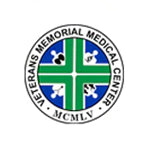Decoding the Purple Dress Code: What Violet Uniforms Mean in Hospitals
In many hospitals, uniform colors are more than just a style choice—they’re a quiet language. One glance at a nurse, doctor, or aide’s scrubs, and you can often tell what their role is, which department they belong to, and even the kind of care they provide.
So where does purple come in… and what exactly is the “purple dress code” in hospitals?
Let’s break it down.
Why hospitals use color-coded uniforms
Hospitals are busy, high-pressure environments. Color-coded uniforms help:
-
Patients and families quickly recognize who’s who
-
Staff identify each other’s roles at a glance
-
Administrators create a consistent, professional image for the hospital
Instead of everyone wearing the same thing, departments are often assigned specific colors—blue for surgery, green for ER, white for doctors, and so on. Purple (or violet) is one of the colors that’s becoming more common in modern healthcare dress codes.
What does purple mean in a hospital setting?
Purple is often associated with:
-
Compassion and care
-
Calmness and emotional support
-
Dignity and respect
-
Spiritual or holistic care
Because of this, hospitals and clinics tend to use violet or purple for teams that work closely with patients’ emotional, mental, or long-term well-being—not just their physical condition.
You’ll see variations from light lavender to deep violet, but the message is usually similar: gentle, reassuring, and supportive.
Who usually wears violet uniforms?
Every hospital has its own rules, but here are some departments and roles that often use violet uniforms or purple accents in their dress codes:
1. Palliative and hospice care teams
Palliative or hospice staff support patients and families through serious or end-of-life conditions. Purple’s connection with dignity, peace, and compassion makes it a meaningful choice for:
-
Palliative nurses
-
Hospice care aides
-
Support staff focused on comfort and quality of life
Their violet uniforms make them easy to recognize as the team that’s there not just for treatment, but for comfort and emotional support.
2. Oncology nurses and staff
Cancer centers and oncology wards sometimes use violet uniforms to:
-
Differentiate their team from general wards
-
Create a calmer, more soothing atmosphere for patients undergoing treatment
-
Build a strong visual identity for long-term care units
For many cancer patients, these violet uniforms become a familiar, reassuring sight during repeated visits or cycles of chemotherapy.
3. Mental health and psychiatric units
In some hospitals, staff in psychiatric or behavioral health departments wear softer colors like lavender or violet to help create a calmer, less intimidating environment.
Purple here can symbolize:
-
Emotional safety
-
Stability
-
A more relaxed, less “clinical” feel
This small visual cue can help patients feel more at ease when opening up about sensitive struggles.
4. Spiritual care and chaplaincy services
Where spiritual care is integrated into hospital services, chaplains or spiritual counselors may also use purple stoles, accents, or uniforms. Purple’s long-time association with reflection and spirituality makes it a natural choice for this role.
5. Support or specialist teams
Some hospitals also assign violet uniforms to:
-
Patient liaison officers
-
Special care coordinators
-
Family support services
Because these roles often bridge communication between patients, families, and doctors, a distinct, memorable color like violet helps people spot them quickly when they need guidance.
Is purple a universal hospital dress code?
Short answer: no.
There’s no single global rule that says “purple = this department.” Each hospital (and sometimes each branch) decides its own dress code. In some places, purple is used for:
-
Physical therapists
-
Midwives
-
Pediatric teams
-
General ward nurses
In others, purple doesn’t appear at all.
That’s why it’s always best for hospitals and clinics to build their own clear, consistent color system, then communicate it to staff, patients, and visitors—through posters, staff IDs, orientation materials, and of course, the uniforms themselves.
Why many hospitals choose violet uniforms
If you’re managing a hospital, clinic, or care facility, purple or violet uniforms can be a smart choice because they:
1. Stand out without being too loud
Deep purples and soft violets are eye-catching, but not overwhelming. They’re easy to distinguish from the usual greens and blues in medical settings.
2. Feel caring, not intimidating
Some patients get anxious around white coats or very dark uniforms. Purple gives a friendlier, more approachable impression while still looking professional.
3. Work well with branding
If your hospital or clinic branding already uses shades of purple, violet uniforms help tie everything together—the logo, signage, and staff uniforms look cohesive and intentional.
4. Photograph beautifully
From hospital campaigns to internal events, violet uniforms look polished and modern in photos and videos—great for both marketing and morale.
Tips for choosing violet uniforms for your hospital
Thinking of making purple part of your dress code? Here are a few things to consider:
-
Pick the right shade.
-
Light lavender: soft, calming, cozy
-
Medium violet: friendly but professional
-
Deep purple: elegant, serious, and dignified
-
-
Match the fabric to the job.
Healthcare uniforms need to be:-
Breathable and comfortable for long shifts
-
Durable enough for frequent washing
-
Easy to move in, bend, lift, and stretch
-
-
Use design details to show roles.
You can use:-
Different collar styles
-
Piping or panels in another color
-
Name embroidery or department labels
This way, even if several teams share the same violet color, their specific roles still look distinct.
-
-
Make sure the color is consistent.
If your facility has multiple branches or a large staff, you’ll want the same shade of violet across all uniforms. Working with a single reliable supplier helps maintain consistency over time.
Bring your violet uniform dress code to life with CraftClothing
If you’re ready to introduce or upgrade your hospital’s purple dress code, Craft Clothing can help you turn your ideas into uniforms your team will be proud to wear.
We specialize in durable, professional-grade uniforms that:
-
Use high-quality fabrics made for everyday medical work
-
Hold their color even after repeated machine washes
-
Can be customized with embroidery, printing, and pattern details
-
Come in inclusive sizing for your entire staff
Whether you’re outfitting a small clinic or a big hospital, we’ll work with your branding, department structure, and comfort needs to create a violet dress code that’s both meaningful and practical.
You can start exploring options for your team with our custom violet uniforms—then share your vision with us, and we’ll craft uniforms that truly represent the level of care you provide.
Your patients deserve clarity.
Your staff deserves comfort.
And your brand deserves craftsmanship that lasts.
























































































































































